|
|
|
 |
 |
 |
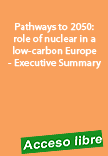 |
Pathways to 2050: role of nuclear in a low-carbon Europe - Executive Summary
FORATOM, 22 November 2018, 6 p..
If Europe is serious about decarbonising its economy by 2050 then one quarter of the electricity produced in the EU will need to come from nuclear. This will ensure that citizens and industry have access to the low-carbon electricity they need – when they need it – and it will help to reduce the economic burden of the transition to a low-carbon economy on consumers. These are the conclusions of an FTI-CL Energy Consulting study commissioned by FORATOM. Entitled “Pathways to 2050: |
role of nuclear in a low-carbon Europe”, the study analyses how nuclear can help Europe reach its 2050 low-carbon targets. It focuses on three nuclear capacity scenarios in 2050: low (36GW), medium (103GW) and high (150GW). The authors also look at the European nuclear sector’s contribution to several key energy policy objectives, namely security of supply, decarbonisation and sustainability, and affordability and competitiveness.
“The study finds that achieving the European emissions targets in a scenario with a significant early phasing out of nuclear plants would prove more challenging and increase costs for customers.” Says Fabien Roques, Executive Vice President of FTI Compass Lexecon Energy. “The results demonstrate how nuclear can contribute to an ambitious decarbonisation of the European economy.” He adds that, “in our view, the EU needs an electricity market design which rewards flexible sources and provides stable long-term investment signals.”
“Nuclear power is a low-carbon technology which is available today”, states Yves Desbazeille, Director General of FORATOM. “Instead of focusing on technologies which have yet to be proven, both technically and financially, the EU should be promoting those which can already provide the low carbon electricity which Europe needs. Only by doing so, does the EU stand a chance of meeting its 2050 decarbonisation targets.”
The full study is available upon request.
|
 |
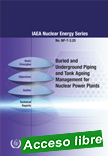 |
Buried and Underground Piping and Tank Ageing Management for Nuclear Power Plants
IAEA Nuclear Energy, 2018, 377 p.
This publication is one in a series of reports on the assessment and management of ageing of the major nuclear power plant (NPP) components. It deals with buried and underground piping and tank systems that are included as part of an NPP and addresses potential ageing mechanisms, age related degradation, and ageing management as well as condition assessments for the material and components of such systems. |
The intended target audience for this publication are NPP owners, operators, designers, engineers and specialists.
|
 |
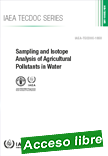 |
Sampling and Isotope Analysis of Agricultural Pollutants in Water
IAEA TECDOC, 2018, 70 p.
Stable isotope techniques can help identify the sources of water pollution associated with agricultural activities. Knowing the origin of nutrients or contaminants is essential to improve agricultural practices. To ensure the quality of stable isotope analysis, appropriate sampling and sample preparation are crucial. This publication presents methods for surface water sampling and sample processing through micro-diffusion and bacterial denitrification combined with laser spectroscopy.
|
Information on such methods is often described in a very summarized and non-comprehensive way without proper illustration of every step. This publication aims to bridge this gap for scientists, technicians and students. It presents a selection of standard operating procedures providing guidance in water sampling and sample preparation that are mandatory when conducting reliable isotope analysis on water.
|
 |
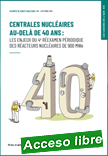 |
Les cahiers de l'ASN n°1 - Centrales nucléaires au-delà de 40 ans
Autorité de Sûreté Nucléaire (ASN - FR), 08/10/18, 26 p.
Dans quelles conditions de sûreté les centrales de 900 MWe, les plus anciennes du parc nucléaire français, peuvent-elles continuer de fonctionner ? Comment garantir la maîtrise du vieillissement des matériaux et des circuits après 40 ans d’exploitation ?
Comment faire encore progresser la sûreté des installations, au regard notamment des réacteurs les plus récents ? L’ASN contribue aujourd’hui aux côtés d’autres acteurs à la concertation sur ces questions, sous l’égide du Haut Comité pour la transparence et l’information sur la sécurité nucléaire (HCTISN).
|
Mesures pour améliorer la sûreté, modalités de prise de décision, implication du public, état des lieux dans d’autres pays en Europe et dans le monde… autant de clés pour comprendre les enjeux des quatrièmes réexamens périodiques des centrales nucléaires françaises de 900 MWe.
|
 |
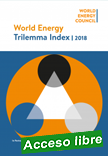 |
World Energy Trilemma Index 2018
World Energy Council, October 2018, 158 p.
The World Energy Council’s Energy Trilemma Index ranks countries’ energy performance on three dimensions: Energy Security, Energy Equity, and Environmental Sustainability, based on global and national data. The results show impacts of decisions and changes, suggesting where policy coherence and integrated policy innovation can help develop well calibrated energy systems in the context of the Grand Energy Transition. Robust energy systems are secure, equitable and environmentally sustainable, showing a carefully managed balance between the three dimensions. |
Maintaining this balance in the context of rapid transition to decentralised, decarbonised, and digital systems is challenging: there are risks of passive trade-offs between equally critical priorities. The 2018 Energy Trilemma Index Report shows that many countries are managing the balance successfully, with eight nations achieving a top AAA balance score.
The Energy Trilemma once more ranks Denmark, Switzerland and Sweden at the top, recognising the well-balanced energy systems in these countries. Denmark also achieves the highest score for Energy Security, followed by Slovenia and Canada, all demonstrating secure, diverse and resilient systems. The Energy Equity dimension ranking is topped by smaller countries, where connectivity is managed well, as well as countries where energy is affordable due to government policies: Qatar tops the list, followed by Luxemburg, Bahrain and the Netherlands. The Environmental Sustainability ranking identifies countries with low carbon and energy intensity, resulting in lower emissions: this highlights lower energy users per capita, including the Philippines, Costa Rica and Uruguay.
|
 |
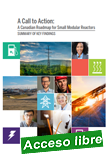 |
A Call to Action: A Canadian Roadmap for Small Modular Reactors
Canadian Small Modular Reactor Roadmap Steering Committee, November 2018, 89 p.
Nuclear energy in Canada is a strategic asset. Canada is a Tier 1 nuclear nation, with a full-spectrum industry that we leverage for significant economic, geopolitical, and social and
environmental benefits.
A Roadmap for Small Modular Reactors (SMRs) is our answer to the question: “What’s next?” It is the result of a 10-month effort that was unlike any other initiative the sector has ever undertaken.
|
Through the SMR Roadmap, representatives from industry, governments, utilities and enabling partners have come together to chart a vision for the next wave of nuclear
innovation. This vision was informed by expert analysis as well as dialogues across the country, including initial engagement with Northern and Indigenous communities and organizations.
|
 |
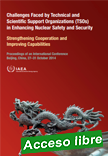 |
Challenges Faced by Technical and Scientific Support Organizations (TSOs) in Enhancing Nuclear Safety and Security - Strengthening Cooperation and Improving Capabilities - Proceedings of an International Conference Held in Beijing, China, 27–31 October 2014
IAEA Proceedings Series, 2018, 92 p.
This publication is the proceedings of an international conference with a primary objective to examine Technical and Scientific Support Organizations (TSOs) and their role in the light of the Fukushima Daiichi accident. |
Through the presentations and discussions, the conference participants assessed the effectiveness of TSOs and explored ways to improve capabilities and strengthen cooperation among TSOs. Other topics addressed included the challenges faced by TSOs when interacting with regulatory bodies, the industry and the public; and the role of TSOs in terms of emergency preparedness and response. The outcome of the conference is summarized in nine recommendations, which include the crucial role of international cooperation and networking among TSOs, as it contributes to increasing experience feedback and provides the information base needed to tackle new.
|
 |
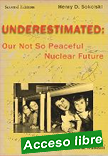 |
Underestimated: Our Not So Peaceful Nuclear Future, Second Edition
Nonproliferation Policy Education Center, August 2018, 149 p.
With the world focused on the nuclear crisis in Iran, it is tempting to think that addressing this case, North Korea, and the problem of nuclear terrorism is all that matters and is what matters most. Perhaps, but if states become more willing to use their nuclear weapons to achieve military advantage, the problem of proliferation will become much more unwieldy.
|
In this case, U.S. security will be hostage not just to North Korea, Iran, or terrorists, but to nuclear proliferation more generally, diplomatic miscalculations, and wars between a much larger number of possible players.
This, in a nutshell, is the premise of Underestimated: Our Not So Peaceful Nuclear Future, which explores what we may be up against over the next few decades and how we currently think about this future. Will nuclear weapons spread in the next 20 years to more nations than just North Korea and possibly Iran? How great will the consequences be? What can be done?
|
 |
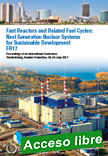 |
Fast Reactors and Related Fuel Cycles: Next Generation Nuclear Systems for Sustainable Development (FR17) - Proceedings of an International Conference Held in Yekaterinburg, Russian Federation, 26-29 June 2017
IAEA Proceedings Series, 2018, 260 p.
This guidance to good clinical practice for nuclear medicine in the UK from the Administration of Radioactive Substances Advisory Committee (ARSAC) has been substantially updated since the 2017 edition to provide guidance on the licencing process under the Ionising Radiation (Medical Exposure) Regulations.
|
The conference also included two panel events devoted to safety design criteria for sodium cooled fast reactors and small and medium-sized fast reactors. An event dedicated to young professionals involved in fast reactor programmes and projects was organized as a plenary session. About 200 oral technical presentations and 200 posters complemented the overall picture of the scientific and the state of the art technical developments worldwide. The proceedings comprise a summary of the different technical, plenary and young generation event sessions as well as the opening, closing and plenary speeches delivered during the conference. A CD-Rom with contributed papers (which are also available online) accompanies the publication.
|
 |
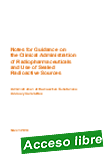 |
Notes for Guidance on the Clinical Administration of Radiopharmaceuticals and Use of Sealed Radioactive Sources
Administration of Radioactive Substances Advisory Committee (ARSAC - UK), 30 January 2018, 60 p..
This guidance to good clinical practice for nuclear medicine in the UK from the Administration of Radioactive Substances Advisory Committee (ARSAC) has been substantially updated since the 2017 edition to provide guidance on the licencing process under the Ionising Radiation (Medical Exposure) Regulations.
|
The notes include advice to help practitioners and employers fill in ARSAC application forms for the administration of radioactive substances for the purposes of diagnosis, therapy and research.
Additional information is also provided on the ARSAC approval process for research studies involving the administration of radioactive substances.
|
 |
| |
|
|

|
|
|
| |
|
|
| |
| |
|
|
| |
| |
|
|
| |
| |
|
|
|
|
|
|
|
